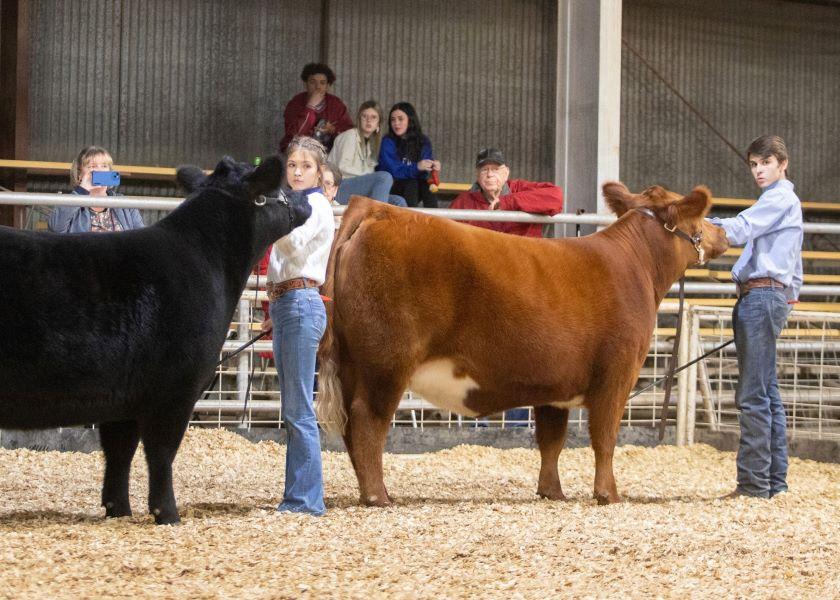Livestock Show Prep: Biosecurity to Reduce the Spread of Disease

Spring livestock shows are underway with summer junior nationals and fall fairs not far behind. Biosecurity should be a priority for exhibitors and their teams before, during and after the show to maintain the health and welfare of the animals shown as well as the herd at home.
Biosecurity is the development and implementation of management procedures to reduce or prevent unwanted diseases from entering the herd or population, as well as limit or prevent the spread of disease within the operation.
“Biosecurity is important at the livestock show because we’re bringing animals from multiple different operations to a single event,” said Rosslyn Biggs, director of continuing education and beef cattle extension specialist. “We have the chance, although it’s small if we’ve prepared our animals correctly, for the transmission of disease.”
It is important to develop biosecurity plans that are specific to the individual operation and developed in partnership with everyone involved in the care of show animals. These written plans should be reviewed regularly and updated as needed.
Good biosecurity relies upon good animal husbandry and attention to detail. Daily assessments of all animals are necessary. An animal’s attitude, behavior, feed and water intake, fecal output and overall appearance should be noted. Changes in clinical signs and treatments should be documented.
Youth exhibitors should also be taught the value of preventative measures and appropriate animal health and nutrition interventions.
“Simple things like vaccinating our animals can make a big difference at the show,” Biggs said.
Veterinarians, along with agricultural education and instructors can serve as a great resource for youth exhibitors. Veterinarians can help exhibitors and their families develop specific vaccination programs, apply appropriate animal identification and respond to illness in show animals.
Consultation with a veterinarian becomes even more important when medications must be administered to observe show regulations and withdrawal times on drug labels. Additionally, most major shows require a timely certificate of veterinary inspection (CVI), commonly called a health certificate, following veterinary examination. The state of destination and show may both have specific health requirements. It’s important to review the health and show requirements well in advance to allow time for any required testing.
During the show, biosecurity should remain a focus. Combined shipments of animals from different locations should be avoided. Equipment and supplies, especially water buckets and feed pans, should not be shared between groups of animals from different operations. Care should be taken in common areas such as wash racks and tie-outs.
“Exhibitors and their teams should limit their exposure as much as possible to only their animals with attention to attire and footwear,” Biggs said. “If an animal becomes ill and there is the potential for infectious disease spread, show management should be alerted so the situation can be assessed and measures taken, if necessary.”
The importance of biosecurity doesn’t end with the show. After returning home equipment, including trailers, should be cleaned and disinfected prior to its next use. Removing organic material, such as manure, hay, and feed, must occur for disinfectants to be effective.
Any new introduction to the farm or ranch, including those returning from a show, should be isolated from the rest of the herd for 30 days. This time allows for disease monitoring and common disease incubation periods to pass.
“Biosecurity is important for every exhibitor and every show project,” Biggs said. “I definitely encourage our young people, 4H and FFA members, to have a discussion with their veterinarian and work closely with their agricultural educators to come up with a plan before, during and after the show so that each can have a successful spring season.”
Observing good biosecurity practices before, during and after a show preserves the commitment to animal health and welfare as show projects enter the food supply or return to the breeding herd.
More from OSU:
Livestock Show Prep: The Importance of a Certificate of Veterinary Inspection







